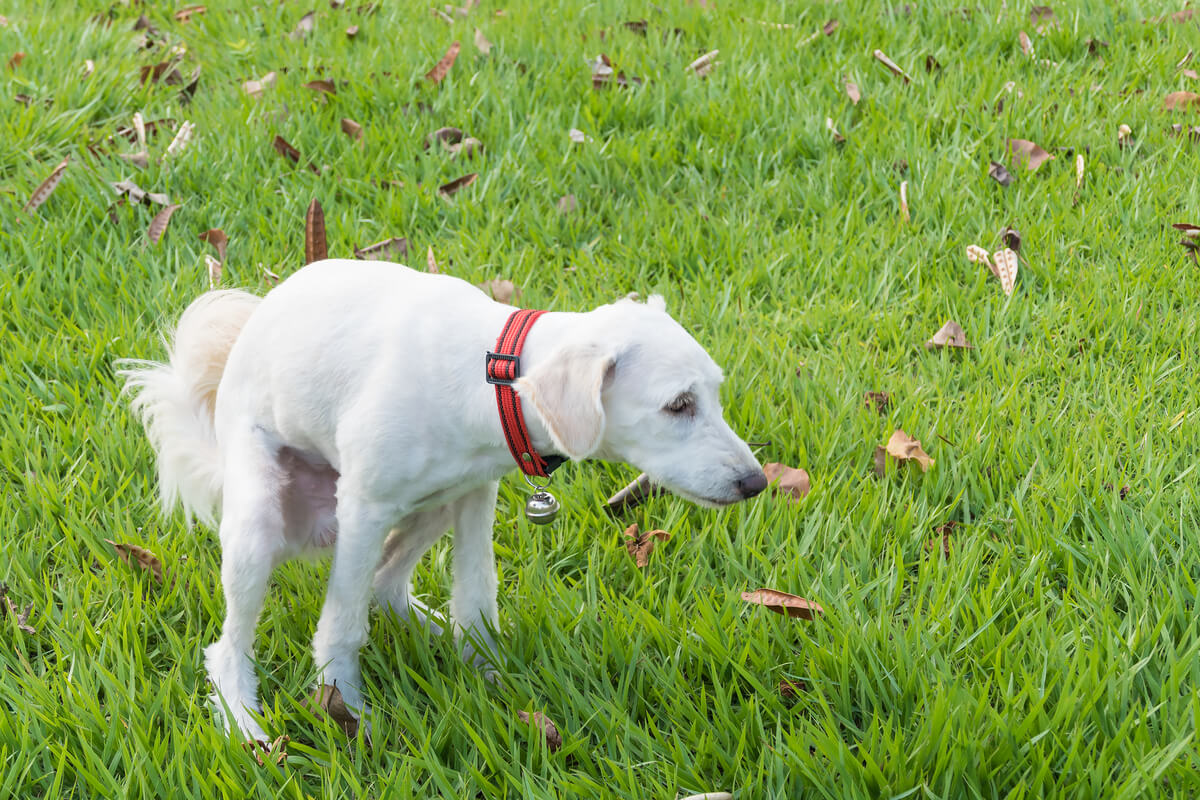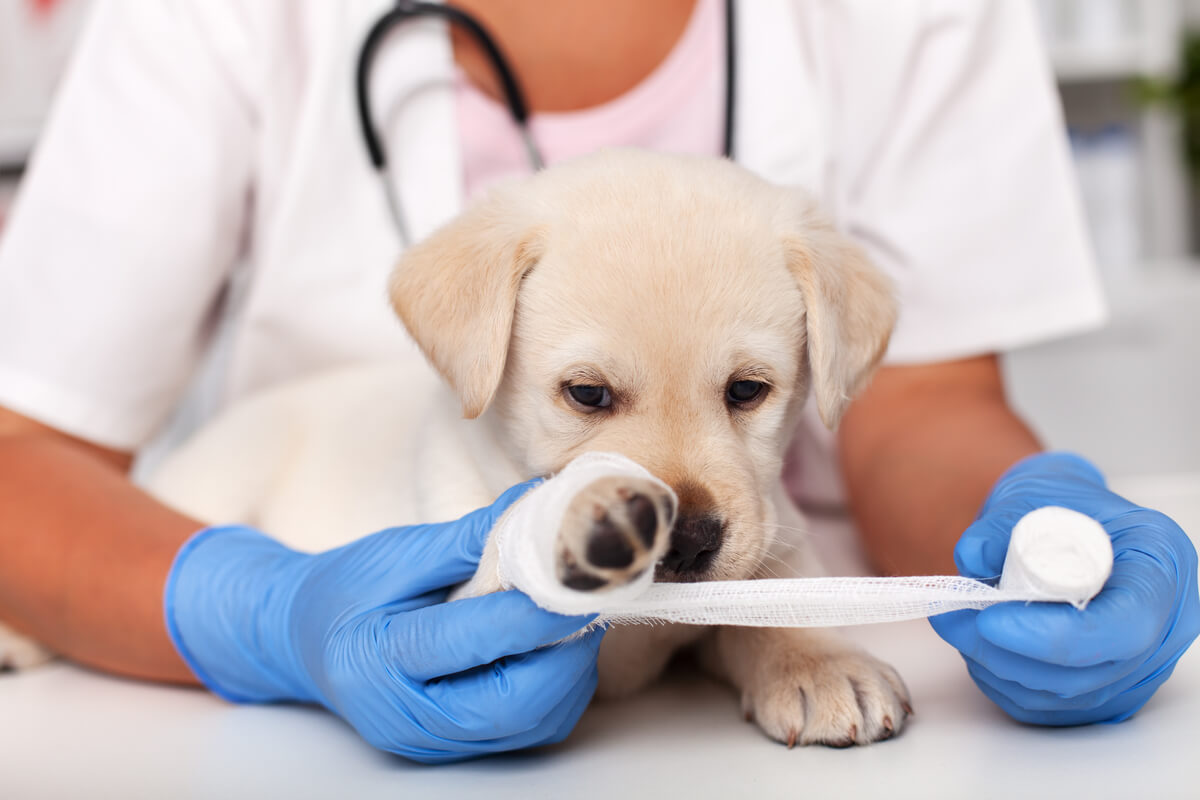16 Symptoms of Disease in Dogs


Written and verified by the biologist Samuel Sanchez
Every guardian will know that their dog is energetic, affectionate, dedicated and adorable in equal measure. However, when a disease afflicts the dog, its behavior changes, and it can even become aggressive towards the people it loves the most at certain times. Get to know 16 symptoms of disease in dogs to detect any condition before it becomes chronic.
As much as we adore animals, we need to recognize that they aren’t indestructible and that, like us, they get sick and die. Even so, there are always treatments for all conditions (even if they’re palliative) and the desire to fight is the last thing you lose.
The sooner an illness is detected, the sooner treatment can begin. Let’s look at the signs that something is wrong with your dog.
1. Accelerated breathing
The respiratory rate of dogs is between 15 and 30 cycles per minute. It’s normal for the animal to breathe faster than normal when it’s excited and after exercising, but if this continues during rest and when sleeping, then it’s most likely that it has a lung or heart condition. Accelerated breathing is known veterinarily as tachypnea.
2. Excessive salivation
Excessive salivation or hypersalivation occurs in both oral and systemic pathologies. For example, a tumor in the mouth can cause the dog to salivate more than normal, but food poisoning or an obstruction in the esophagus also causes this sign. This is one of the most common symptoms of disease in dogs at the intestinal level.
3. Diarrhea
It’s normal that dogs are sometimes inconsistent when they defecate, because, like us, something they have ingested may upset their stomachs. However, any diarrhea lasting more than 48 hours should be evaluated by a veterinarian. The condition becomes more urgent if the stools are accompanied by mucus, blood, pus, and other clinical signs.

4. A lack of appetite
Transient bowel conditions can make your dog less hungry for a day. This is normal, but if the animal doesn’t eat in 24 hours and doesn’t show signs of improvement, it’s time to go and see your vet. This symptom of illness in dogs should never be ignored, as it sometimes leads to dehydration scenarios that are much more difficult to treat.
5. Excess urination
If your dog pees indoors while still accustomed to urinating only on the street, it’s likely that it has a kidney or systemic problem. Most likely, it has developed urinary incontinence, but this is also a sign of some cancers, kidney failure, and diabetes.
6. Reddened gums
Reddened gums in dogs are signs of very common oral conditions: gingivitis and periodontitis. If the animal’s dental hygiene is not maintained, over the years the bacteria in its mouth will erode the teeth and inflame the gingival tissue. Therefore, the gums bleed when the dog tries to eat and at other times too.
This is one of the symptoms of illness in dogs that is often accompanied by bad breath.
7. Mouth bleeding
Bleeding from a dog’s mouth is always evidence of a medical emergency. It may have damaged a tooth or gum, but there’s also the possibility that it’s bleeding from its esophagus or stomach or has oral melanoma. Be that as it may, bleeding is always a bad sign, wherever it comes from.
8. Dry and peeling skin
The skin is an indication of an animal’s health in all cases. Dermatitis and seborrhea manifest with a dry and scaly epidermis, but this can also be one of the symptoms of diseases in dogs such as parasitosis, vitamin deficiencies, psychological problems, and much more.
Skin problems can also stem from poor hygiene and an unhealthy environment.
9. Progressive changes in weight
This is one of the symptoms of disease in dogs that you only notice in the long term and with close monitoring. If you control your pet’s diet well and they get enough exercise, they shouldn’t gain or lose weight drastically. In general, unexplained fluctuation in the dog’s mass indicates a hormonal or digestive problem.
10. Lethargy
This symptom is quite subjective, as only the guardian knows how energetic their canine was before the illness. However, we can generalize and say that all healthy dogs would want to go out about 3 times a day for a walk. If you find that your animal is no longer enthusiastic about play and exercise, chances are that it has something wrong with it.
11. Vomiting
For your dog to vomit is quite normal, especially if it has overeaten at mealtime or has been consuming grass during the walk. What isn’t natural is that it regurgitates its food 2-3 times a day, and even more so if it’s accompanied by blood. You should also be concerned about bright yellow vomit, as it indicates the presence of bile.
12. Bad breath
Bad breath in pets is normal, as we normally don’t consider any of their aromas to be pleasant. However, there’s a big difference between your dog’s mouth smelling like tuna and the smell being similar to that of a rotten animal or a sewer. Fetid breath in dogs often indicates infections of the mouth (or elsewhere).
13. Difficulty breathing
If the term tachypnea designates rapid breathing, dyspnea occurs when the dog has difficulty obtaining oxygen from the environment. This condition is usually accompanied by various symptoms of disease in dogs, such as coughs, sneezes, and changes in position to facilitate the entry of air into the lungs.
14. Aggression
A well-behaved dog will never attack its guardian unless they’re in a very bad physical or psychological condition. If something is really hurting it a lot and the dog has anxiety and stress as a result of it, then it may bite when startled or be defiant when a person tries to get close to it. It doesn’t want to hurt you, it’s just scared.
15. Excessive licking
Dogs instinctively lick their damaged areas a lot, as their saliva contains some bactericidal compounds capable of preventing infections. Therefore, one of its first responses to a wound is to lick constantly, whether the guardian likes it or not. Sometimes an Elizabethan collar is required to prevent this behavior while the injury heals.
16. Lameness
This is another of the symptoms of disease in dogs that’s usually accompanied by apathy, aggressiveness, and movement problems. Lameness in dogs always indicates that something is wrong in one or more of the limbs, although the severity of the underlying condition is highly variable. Bone cancers cause lameness, but a simple muscle stiffness can as well.

As you can see, there are many symptoms of disease in dogs. Some of them appear immediately, while others require long-term monitoring. In general, as soon as you notice something strange in your dog for more than 24 hours you should go to the vet, and much more so if the clinical sign is accompanied by signs of urgency (blood, pus, and vomiting, among others).
All cited sources were thoroughly reviewed by our team to ensure their quality, reliability, currency, and validity. The bibliography of this article was considered reliable and of academic or scientific accuracy.
- Sick dogs symptoms, Know the signs. Recogido a 6 de septiembre en https://www.purina.com.au/dogs/health/sick-dog-symptoms#.YTW8G50zbIU
- The Top 10 Signs Your Dog May Be Sick (and What You Can Do About It), Pet Health Network. Recogido a 6 de septiembre en https://www.pethealthnetwork.com/dog-health/dog-checkups-preventive-care/top-10-signs-your-dog-may-be-sick-and-what-you-can-do-about
This text is provided for informational purposes only and does not replace consultation with a professional. If in doubt, consult your specialist.